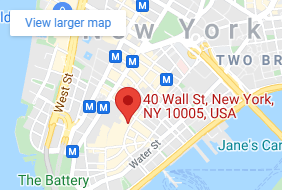On October 5, 2012 a front-page article appeared in the business section of the New York Times, it’s title, “Two Sides of Product Liability – A Factory’s Closing Focuses Attention On Tort Reform”. The article tells the story of the closing of a plant in Oklahoma [with the loss of 117 jobs] that since 1970 manufactured gasoline cans. Its present owners place the blame on “frivolous lawsuits” and greedy lawyers who through the years have recovered millions of dollars on behalf of users of their product who suffered injury from flash- back explosions of cans filled with gasoline.
Here again we see the U.S. Chamber of Commerce and the Institute for Legal Reform using the plant closing as a continuous means of propagandizing their agenda which goal is to destroy the right of an injured consumer to sue for injuries sustained in the use of a defective product. And so the two organizations cited above, pursue their crusade to protect the poor and defenseless manufacturers from the grips of “litigious” consumers by placing the full blame of a factory shutdown upon those who have suffered massive injuries, and in some cases, death; and despite such calamities, still have the insensitive callousness to describe those cases as “frivolous”.
Let’s look at the facts: The manufacturer, Blitz, USA, has manufactured gasoline cans in its Oklahoma factory for over 40 years. In that time it has produced and sold millions of gasoline cans. Blitz has always been aware of the dangers inherent in the use of its gasoline can, that of a flash – back, as vapors outside the can have the potential to cause an explosion if the can is exposed to a flame, a pilot light, stove, feeder, electrical motor, or other source of ignition. In fact, the 62 lawsuits brought against the company since 1994 have all been based upon a flash – back explosion that caused tragic burn injuries, and in some cases, death. Knowing therefore that it was manufacturing a potentially dangerous product, it has relied upon its “misuse” warnings as a legal defense. But if indeed it admits to placing 14 million cans on the market each year, it is a statistical certainty that a tragic accident will occur since all users are not of the same level of education. There are some in fact who can’t even read, let alone read the warning language tucked away in a manual or somewhere on the can itself. Does that mean they should be denied a remedy purely because the manufacturer made the decision to manufacture a gasoline can without a “flame arrester” that would have prevented the tragic accidents from occurring in the first instance?
Interestingly, in 2007, Blitz was purchased by an equity firm at about the time it was developing a “flame arrester” attachment. When the new management took over however, they scrapped the “flame arrester” project, with injured consumers arguing that the decision was made solely to save costs and with complete disregard for a safer product. The equity firm claimed it discontinued the development of a “flash arrester” due to its concern that consumers would be more inclined to use the gasoline cans on open fires if they knew that a flash – back could not occur. As to which of the two responses is more related to the truth, historically, equity firms have had but one goal – what we witnessed with Bain Capital – to increase their bottom line, and the cost of developing and reconfiguring a “flash arrester” onto their existing product, is not compatible with their big profit – margin calculus.
According to its website, on November 11, 2011, Blitz filed under Chapter 11 of the Bankruptcy Code seeking a reorganization plan. Its stated reason was as follows: “We have been operating under an extremely litigious environment”…thus the action taken will “…provide us an opportunity to develop a long – term solution to the increasing defense costs we face… we are committed to providing the best and safest fuel containment products in the world.” In reality, the equity firm that purchased Blitz in 2007 was the very petitioner that filed for bankruptcy protection in 2011, and as stated, it was done primarily to protect itself from the lawsuits it already knew about and inherited through its purchase. It must of had a bankruptcy back – up plan in place at the time of the sale [a common equity firm strategy that is usually a profitable move], instead of working toward the development of a safer “flash arrester” gasoline can. Equity firms do not normally purchase a business in order to invest additional money on research and development. They do so with the mind-set of trimming expenses and reducing costs, thereby increasing profits. It should be noted that a “flame arrester” is nothing more than a piece of wire mesh attached to the opening of the container that acts to block flames from entering the gasoline can thereby preventing a flash-back explosion. But even this simple addition would have required a retooling and a completely new design of the can itself, something that the new equity owners were not interested in pursuing when they disregarded safety and the factored-in costs required to achieve it.
As for the US Chamber of Commerce and the Institute for Legal Reform, their motive is to protect the manufacturer and not the consumer. Such words as “tort reform”, “legal reform”, and “frivolous lawsuits”, are no more than Orwellian doublespeak word combinations designed to camouflage their true motives, which are: to protect the manufacturers in every way, and to demonize those injured consumers who have the temerity to bring a law suit just because they have suffered catastrophic injuries or even death in the use of their unsafe products.
If the Institute for Legal Reform was really concerned with safety issues and not the agenda designed to insulate manufacturers from liability, its name would be changed to the Institute for Product Safety. But considering that all funding originates from the very source it seeks to protect, such a change is pure fantasy.
As for the so called “greedy” lawyers, were it not for the aggressive battles they mount against the giant manufacturers, most products would be produced with but one goal – profit! As for the injured consumer, without the efforts of an experienced and dedicated plaintiff’s Bar, he/she would be left helpless, outnumbered, outspent, and very likely, out of court. It is the product liability lawyer whose dedication and knowledge forces manufacturers to produce safer products if only to reduce the number of lawsuits they would face should they fail.
In essence, the goal of the proponents of “tort reform” is to achieve “tort destruction” by regressing into the dark ages when consumers were at the mercy of manufacturers who placed profit ahead of safety. Fortunately, we have advanced from that shadowed place, but there are still ominous clouds that are beginning to appear. Therefore, faced with this ever-present challenge, the public, together with the plaintiff’s Bar must continue their vigilance to ensure that no highly-financed lobbying group should ever succeed in either limiting the basic rights of the consuming public, or in compromising the safety of the products found in the market place. Full justice may require more, but demands nothing less.




























